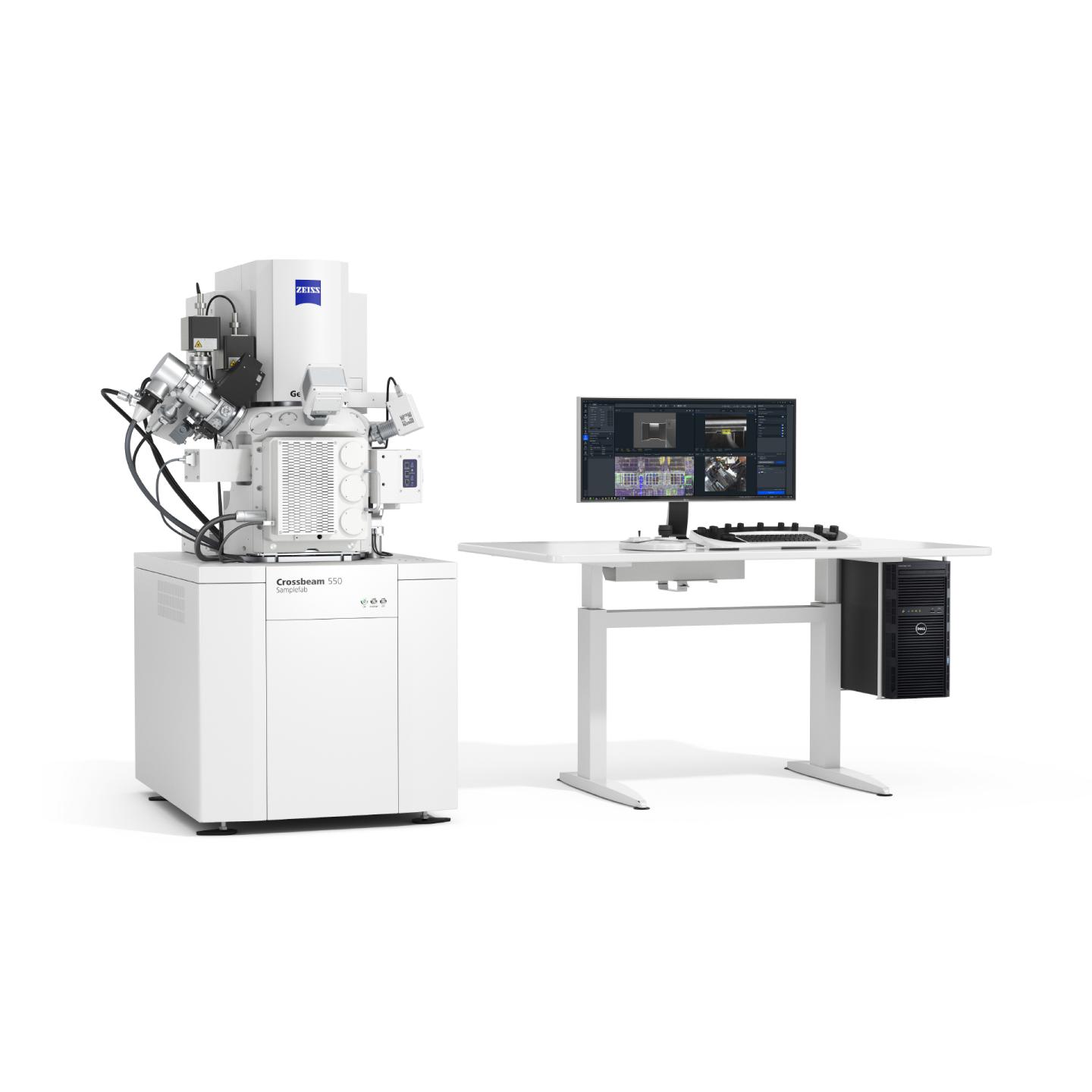FIB-SEM
ZEISS CrossBeam 550 — FIB-SEM
At the Institute of Metals and Technology (IMT), we use the ZEISS CrossBeam 550, which combines scanning electron microscopy (SEM) with a focused ion beam (FIB). This system enables both high-resolution surface imaging and micro- and nanomachining of samples, opening new possibilities for research and the development of advanced materials.

Key Analytical Techniques
EBSD – Electron Backscatter Diffraction
A system for determining the orientation of crystal grains (Hikari Super Plus, EDAX), enabling precise analysis of crystal structures and textures in materials.
EDS – Energy Dispersive Spectroscopy
Octane Elite spectrometer (EDAX), providing fast and reliable elemental analysis at various magnifications.
SIMS – Secondary Ion Mass Spectrometry (HIDEN EQS-FIB SIMS 1000 probe)
An integrated SIMS system that works directly with the FIB-SEM, significantly expanding the microscope’s capabilities and enabling the most advanced surface and volumetric chemical analyses.
EDS – Energy Dispersive Spectroscopy
What does EDS provide?
EDS (energy-dispersive X-ray spectroscopy) is a method that detects characteristic X-rays generated by the interaction of an electron beam with the sample. Our system is equipped with an Octane Elite spectrometer (EDAX, 70 mm²), which allows fast and highly sensitive elemental analysis.
Advantages and capabilities:
-
Quantitative and qualitative analysis of the sample’s elemental composition.
-
Real-time elemental mapping – visualisation of element distribution across surfaces or cross-sections.
-
Detection of elements from beryllium (Z=4) upwards, including trace elements.
-
Full compatibility with FIB and EBSD – enabling combined analysis of microstructure and chemical composition.
-
Fast analysis of larger areas or detailed study of individual nanostructures.
EBSD – Electron Backscatter Diffraction
What does EBSD provide?
EBSD (electron backscatter diffraction) is a technique that enables precise determination of crystal structure, orientation, and texture in materials. On the ZEISS CrossBeam 550, we use the Hikari Super Plus camera (EDAX), which ensures fast and reliable data acquisition, even for demanding samples.
Advantages and capabilities:
-
Determination of crystal grain orientations and texture analysis of materials.
-
Identification of phases and crystal structures with high spatial resolution.
-
Ability to map microstructure in 2D and 3D (in combination with FIB), allowing us to study microstructural evolution during processes such as deformation, recrystallization, or phase transformations.
-
Analysis of grain size and distribution, with comprehensive statistical evaluation of results.
Advantages of the Integrated SIMS System
-
Software for the detection of elements, species, and phases, with advanced data processing and 3D visualisation of analysed areas.
-
Lateral resolution < 50 nm, enabling precise chemical mapping even in nanostructures.
-
Depth resolution < 20 nm, allowing creation of 3D depth profiles and study of subsurface composition.
-
Detection of elements, species, and phases up to 300 AMU, including isotopes, provides a complete view of chemically complex materials.
-
Trace element analysis down to ppm levels is essential for developing new materials and for studies where even the smallest concentrations affect material properties.
Why is the EBSD + EDS + SIMS combination so important?
On a single system, we combine three of the most important analytical techniques for the study of metallic and inorganic materials:
-
EDS tells us which elements are present and how they are distributed,
-
EBSD reveals how the grains are oriented and the microstructure of the material,
-
SIMS provides insight into trace elements, phases, and isotopes as well as their 3D depth profiles.
This integration gives our laboratory a comprehensive view of materials – from morphology and microstructure to detailed elemental and phase analysis – a capability that is still rare, even at the European level.
 Inštitut
Inštitut




